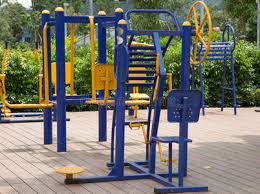Identify Your Fitness Goals: Set Clear Objectives
Starting with outdoor fitness begins by setting clear and achievable fitness goals. Whether you aim to increase strength, improve cardiovascular health, lose weight, or enhance flexibility, having specific targets in mind helps guide your activities and measure progress. Research from the Journal of Clinical Psychology suggests that individuals who set detailed fitness goals are 30% more likely to achieve success compared to those who don’t. Start by outlining what you hope to accomplish and use these goals to plan your outdoor workouts.
Choose the Right Location: Accessibility and Suitability
Selecting an appropriate location is crucial for a successful outdoor fitness routine. Look for nearby parks, hiking trails, or community sports fields that are easily accessible. An accessible location reduces barriers to regular exercise and increases your likelihood of sticking with a fitness regimen. Consider the variety of activities each location offers; for example, parks with fitness trails and outdoor gym equipment are ideal for diverse workouts. A study by the National Recreation and Park Association revealed that 75% of people are more motivated to exercise when natural beauty and specialized equipment are readily available.
Use Available Resources: Utilize Outdoor Equipment
Take advantage of the outdoor fitness equipment provided in many public spaces. This can include pull-up bars, push-up stations, and balance beams, which are designed to use your body weight as resistance, offering a comprehensive workout. The American Council on Exercise reports that individuals using stationary outdoor equipment can increase their muscle strength by up to 40% over six months. If you’re new to this type of equipment, start with basic exercises and gradually increase the intensity as your fitness improves.
Incorporate Natural Elements: Boost Your Routine
Natural elements like hills, stairs, and uneven terrain can significantly enhance your workout’s intensity and effectiveness. For instance, hill sprints increase calorie burn and build leg strength more efficiently than running on flat surfaces. According to the Journal of Environmental and Public Health, exercising in natural environments can also lead to longer, more frequent, and enjoyable workouts. Use these elements to add variety and challenge to your outdoor fitness routine.
Stay Consistent and Safe: Establish a Routine and Take Precautions
Consistency is key to any successful fitness program. Aim to establish a regular schedule that fits into your lifestyle and stick to it. Additionally, always consider safety, especially when working out alone or in remote areas. Let someone know your plans or bring a friend to ensure safety. According to the Centers for Disease Control and Prevention, exercising in daylight and in well-trafficked areas are best practices for outdoor activity safety.
Keep Track and Stay Motivated: Monitor Your Progress
Monitoring your progress is vital for staying motivated and adjusting your fitness plan as needed. Use fitness trackers or apps to keep detailed logs of your workouts, including duration, intensity, and frequency. Tracking your progress not only helps you stay committed but also provides tangible evidence of your improvements. Data from the Fitness Industry Association indicate that people who track their progress are 50% more likely to achieve their fitness goals.
Embarking on an outdoor fitness journey is an excellent way to improve your physical and mental health while enjoying the benefits of being outdoors. By setting clear goals, using available resources, and maintaining safety and consistency, you can effectively integrate fitness into your daily life. Discover more about the exciting possibilities of outdoor fitness and how you can make the most of your environment to achieve a healthier lifestyle.
